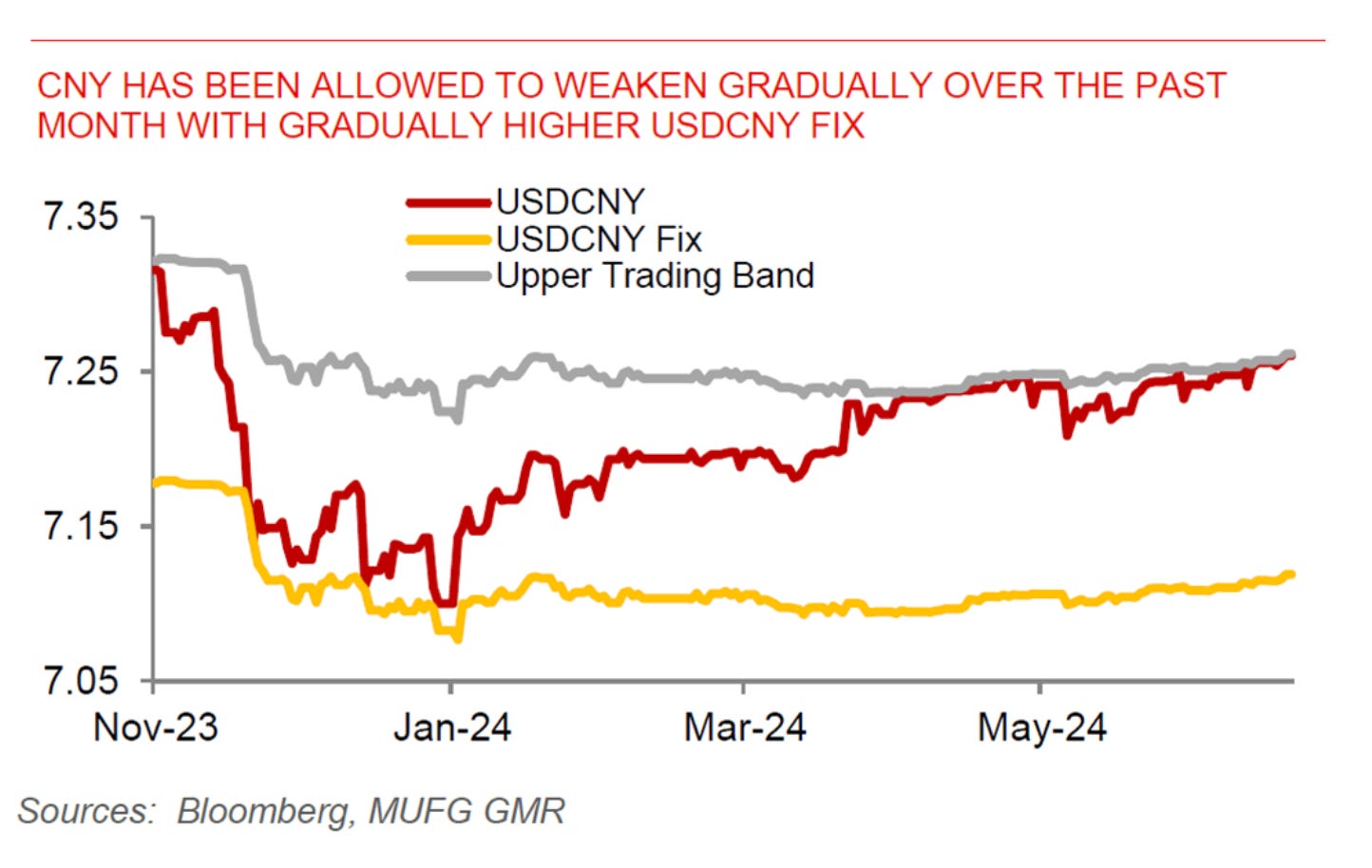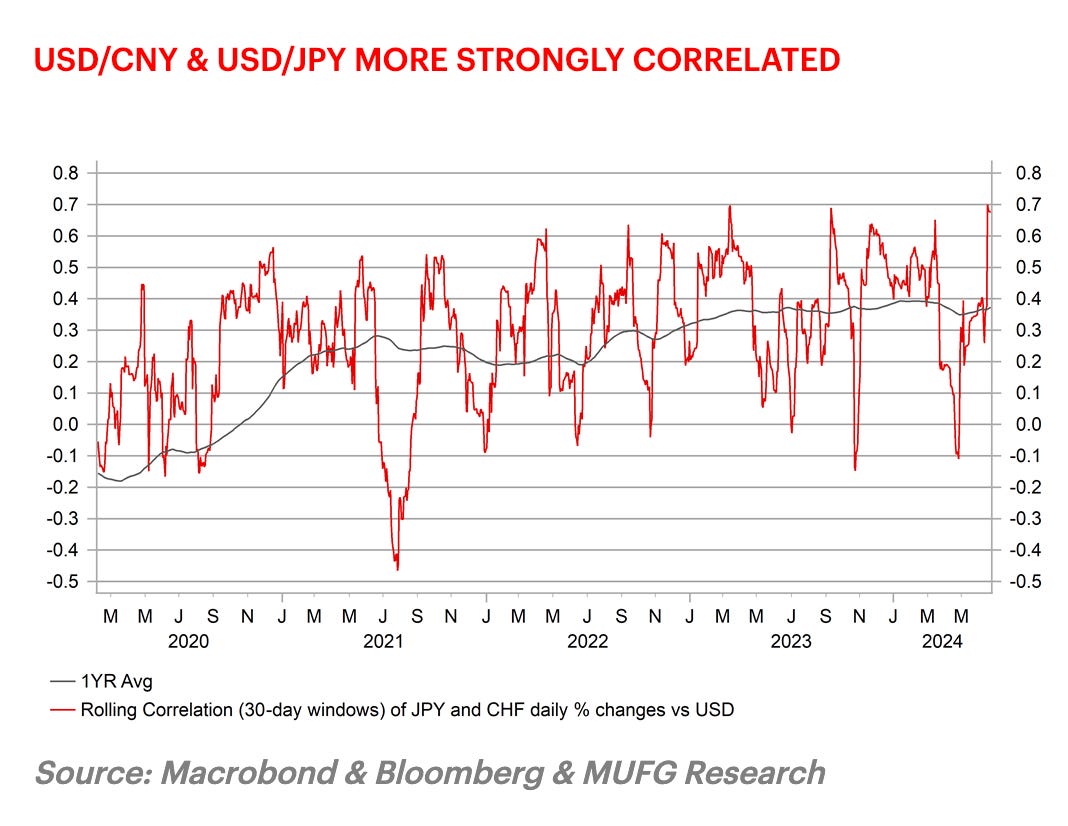Busy Week Ahead On The US Macro Front, Including Presidential Debate
The final trading week of the year's first half kicks off on Monday, and the outlook is a mixed bag. From an equity perspective, Asia appears to be holding up reasonably well. However, the picture is more varied regarding currencies and bonds, and the Chinese market is painting a bleaker picture.
Chinese stocks, in particular, are struggling to stop their downward slide, which has seen them lag behind regional and global peers throughout the year. Investors will watch closely to see if this trend can be reversed in the coming days.
Nonetheless, It’s shaping up to be a busy week on the U.S. macroeconomic front, with the highlight being the update on the Fed’s preferred price gauge. While we know that U.S. inflation was tame in May—at least according to the latest CPI and PPI releases—the upcoming PCE prints are expected to follow suit. Economists predict an unchanged headline and a modest 0.1% month-over-month increase for the core gauge.
If current economic projections hold the course, we may see a return to the pace observed late last year. At that time, Federal Reserve officials were optimistic about the disinflation trajectory, so much so that several key Fed speakers suggested that several “insurance cuts” would be in the offing.
However, a series of Consumer Price Index (CPI) overshoots in the first quarter and a resilient labour market has since tempered the Fed’s confidence in their lower economic projections. These developments have led to a significant revision of the initial projections for 2024 rate cuts. The December and March dot plots initially indicated the possibility of three rate cuts. Yet, as of this month, the median forecast has been scaled back to just one reduction, which, based on recent comments from Fed officials, is likely to occur no sooner than the fourth quarter.
In addition to the deluge of U.S. economic data—including the much-anticipated PCE inflation, personal spending, and durable goods reports, which are expected to confirm a slowing U.S. economy—market attention will also be focused on the first U.S. presidential election debate between Trump and Biden on June 27. This debate is taking place much earlier than usual compared to previous elections.
Beyond the specific policy pronouncements, markets will keenly observe the cognitive intangibles that could influence the election's outcome. How the candidates perform, their demeanour and their ability to connect with voters will be closely scrutinized, as these factors could tilt the balance one way or another as we head toward the November election.
So, as we brace for the latest economic data, the overarching theme remains one of cautious optimism tempered by the ever-persistent uncertainties of inflation and labour market dynamics.
Meanwhile, investors in Japanese assets are on high alert for potential F.X. intervention after the Yen fell for the seventh consecutive day on Friday, nearing the 160.00 per dollar mark. This level prompted Tokyo's first yen-buying intervention almost two months ago.
With the Bank of Japan's next policy meeting not scheduled until July 30-31, and in the absence of weaker-than-expected U.S. economic data, there may be a need for verbal or direct intervention to stop the Yen's decline.
The Chinese Central Bank (PBoC) appears increasingly tolerant of a gradual weakening of the Yuan, exerting a noticeable pull on other Asian currencies, including the Yen. This trend is unfolding slowly but steadily, influencing the broader F.X. dynamics in the region.
Investors closely monitor these developments as they assess the implications for currency markets as we advance. The Yuan's subtle decline prompts forecast adjustments across Asia, reflecting a cautious yet deliberate approach by regional currency traders, including Tokyo Yen trading desks.
Observers are monitoring whether the strong correlation between USD/JPY and USD/CNY, which saw both the JPY and CNY weaken last week, continues into the current week.
More By This Author:
The "Follow You Follow Me" Dance Between The JPY And CNY Continues
S&P 500 Edges Back From Record Highs As Bond Yields Rise
Cutting Rates Might Be The Most Effective Strategy To Reduce Inflation In The U.S





